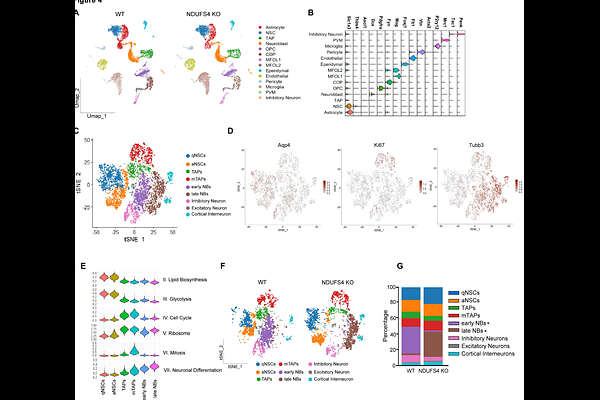Impaired Complex I dysregulates neural/glial precursors and corpus callosum development revealing postnatal defects in Leigh Syndrome mice

Impaired Complex I dysregulates neural/glial precursors and corpus callosum development revealing postnatal defects in Leigh Syndrome mice
Biswas, S. R.; Tomsick, P. L.; Kelly, C.; Lester, B. A.; Milner, J. P.; Henry, S. N.; Soto, Y.; Brindley, S.; DeFoor, N.; Morton, P. D.; Pickrell, A. M.
AbstractLeigh syndrome (LS) is a complex, genetic mitochondrial disorder defined by neurodegenerative phenotypes with pediatric manifestation. However, recent clinical studies report behavioral phenotypes in human LS patients that are more reminiscent of neurodevelopmental delays. To determine if disruptions in epochs of rapid brain growth during infancy precede the hallmark brain lesions that arise during childhood, we evaluated neural and glial precursor cellular dynamics in a mouse model of LS. Single cell RNA sequencing along with histological and anatomical assessments were performed in NDUFS4 KO mice and compared with controls to determine the impact of Complex I deficiency on neural stem cells, their neuronal and oligodendroglial progeny, lineage progression, and overt differences in specific brain regions. Our findings show disruptions in all categories, specifically within the subventricular zone and corpus callosum. Given that LS is purely considered a neurodegenerative disease, we propose that mitochondrial dysfunction is a neurodevelopmental signature predating classic diagnosis in LS.